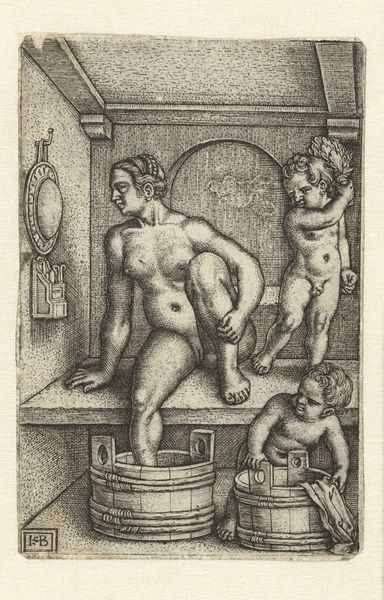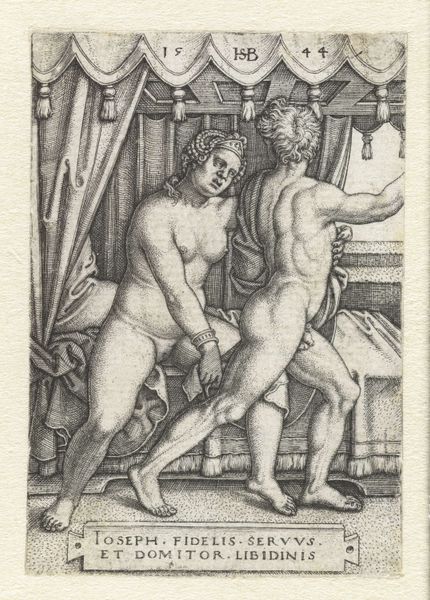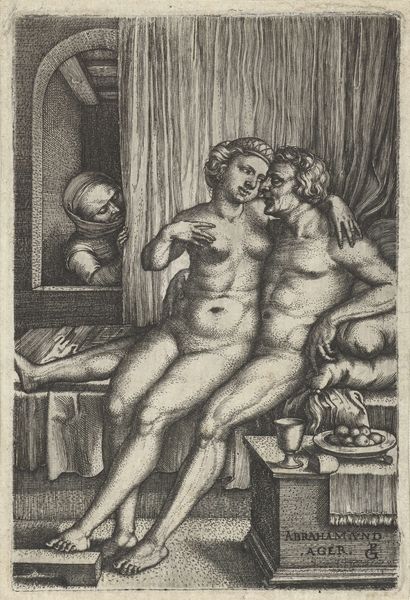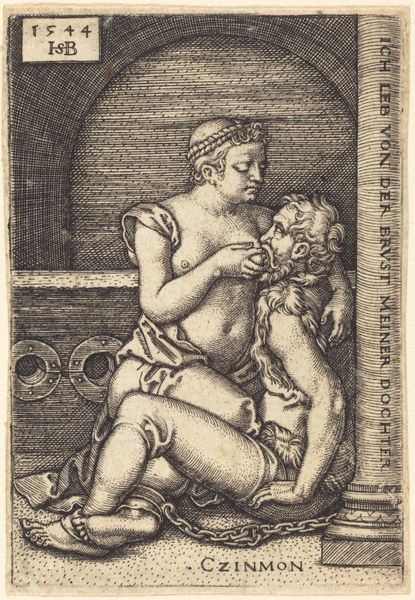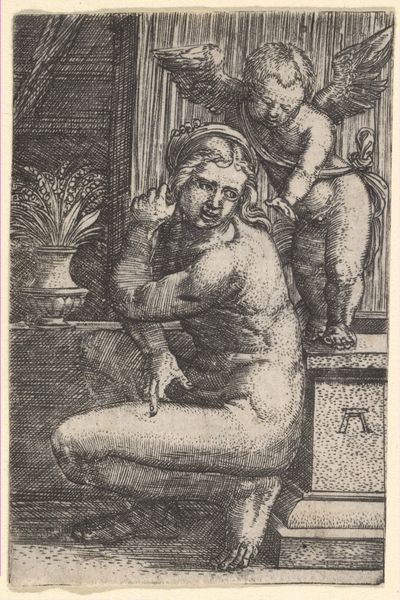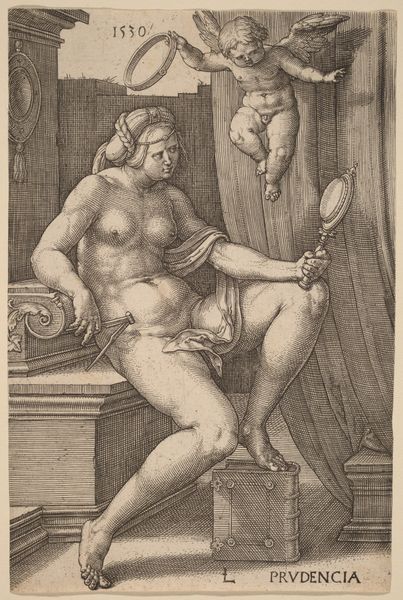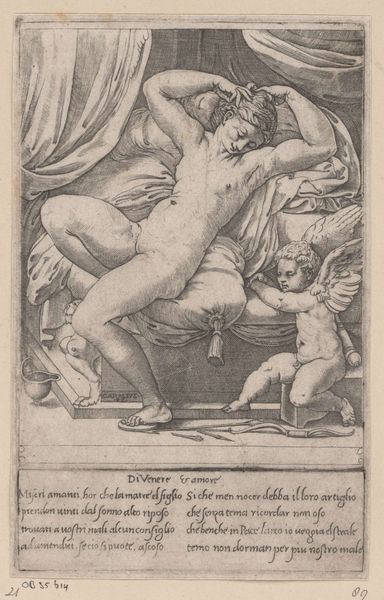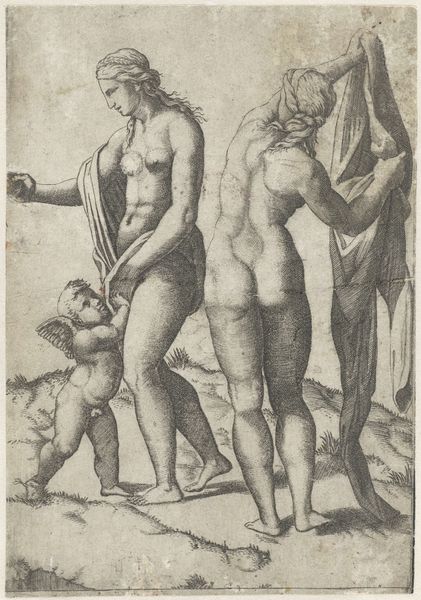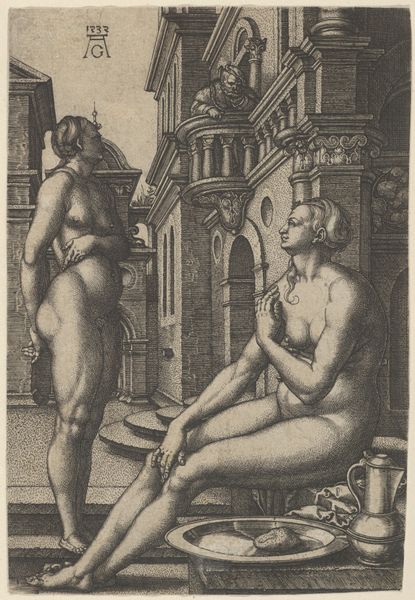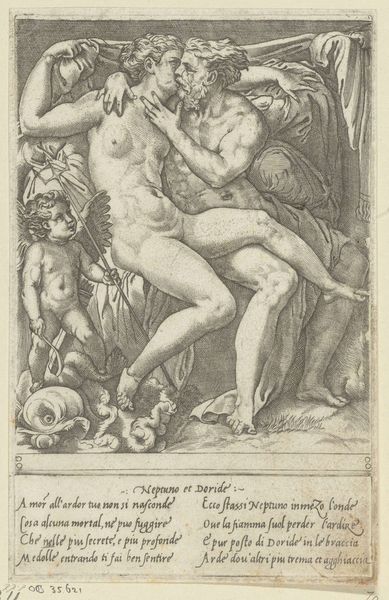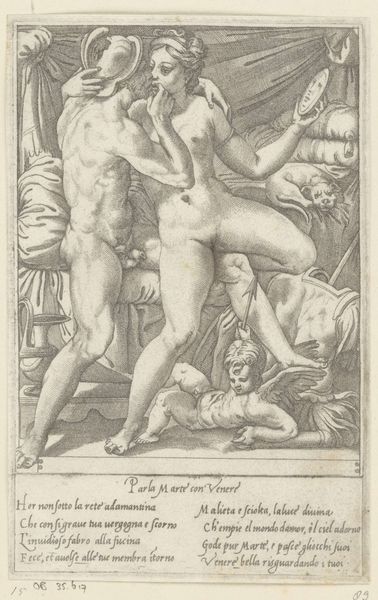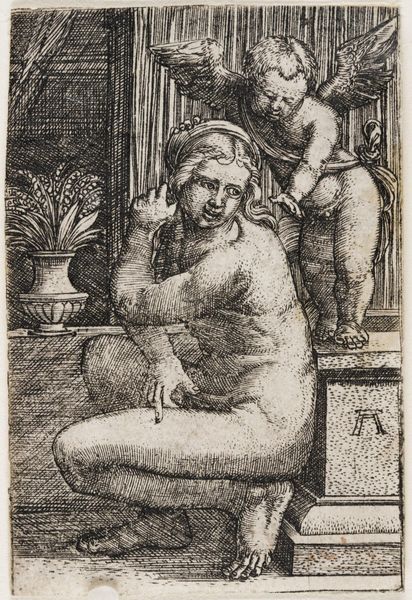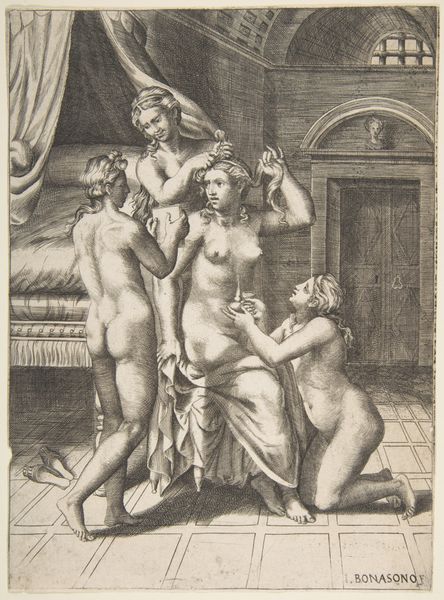
engraving
#
figuration
#
portrait drawing
#
genre-painting
#
northern-renaissance
#
nude
#
engraving
Dimensions: height 83 mm, width 58 mm
Copyright: Rijks Museum: Open Domain
Curator: What a wonderfully peculiar image. "Three Women in a Bathroom" as it's called, was completed as an engraving by Sebald Beham in 1548. Currently, it resides here at the Rijksmuseum. Editor: It's striking, isn't it? The figures seem almost monumental despite the small scale, and the intense crosshatching gives the whole scene a weighty, textural presence. I find the positioning of the figures fascinating. Curator: I agree, the arrangement immediately suggests so many readings. Gender, class, labor—it all seems intertwined here. We have this rather fleshy, matronly figure being attended to by at least one other woman and seemingly overseen by two other onlookers. Given Beham’s historical context, it raises questions about bodily autonomy, domestic service, and perhaps even early forms of surveillance. Editor: The use of line is incredibly confident. Notice how Beham models the forms with a dense network of hatching and cross-hatching. The dramatic shifts in tonal value are interesting; it creates an intensity. Also, the geometry of the composition itself—the way the lines lead the eye around. The woman stepping on the small stairs or pedestal, how that informs a pyramidal arrangement with the two younger people behind her. It's intricate. Curator: And the nudity of the women invites discourse too. What societal commentary might Beham have been attempting here? Perhaps the bathing scene served as a veiled critique of moral decadence. Or alternatively, we could consider if he simply wished to portray the reality of intimate female interactions. How can we assess its socio-political context as a whole? Editor: A very curious detail for me is how all three of them share the same odd grin. It suggests something unsettling, some underlying discomfort within what would otherwise seem an innocuous domestic moment. And as an engraving, of course, we need to think about its dissemination. Was this meant for a bourgeois audience, or were its consumers from the lower classes as well? What visual culture would Beham’s consumers recognize within it? Curator: Absolutely, questions about spectatorship cannot be dismissed here. Overall, it makes you think about the everyday realities of women in 16th-century Europe. What were their roles, expectations, and lived experiences? Editor: Agreed. It provokes contemplation on his confident construction with line to produce dynamic imagery that seems to radiate its odd themes from a bygone era.
Comments
No comments
Be the first to comment and join the conversation on the ultimate creative platform.
